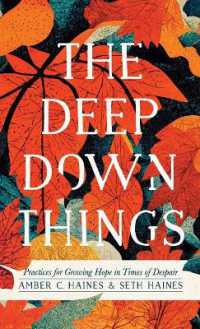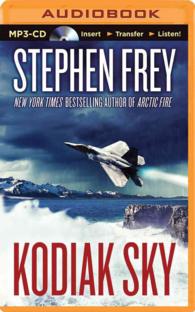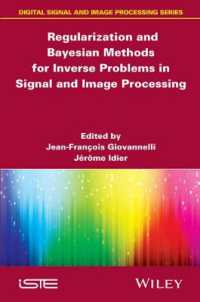Full Description
Teaching Science to Culturally and Linguistically Diverse Elementary Students helps K-8 teachers implement culturally relevant instructional strategies to ensure that all students, regardless of race, ethnicity, or socioeconomic class, can do science, like science, and become scientists if they choose.
In America's increasingly diverse classrooms, science is not always presented in a way that is meaningful to all students. With this in mind, this book outlines 8 culturally relevant strategies for teaching science to help ensure all students have access to inquiry-based, interactive, and experiential science learning. Written to encourage inclusive practices, the book shows how to teach science using students' experiences, how to integrate science and literacy and how to use alternative methods to assess students' understanding of science.
Includes 8 culturally relevant strategies for teaching science to all students-outlines inclusive practices that ensure all students have access to inquiry-based, interactive, and experiential science learning.
Emphasizes family connections and teaching science to and through students' experiences-connects science activities and content to students' lives at home and includes a chapter on fostering family connections and family connections icons throughout the book.
Offers examples of science and literacy connections-models how teachers can integrate science and literacy to enhance students' understanding of science.
Includes case studies with reflection questions in each chapter-provides examples of culturally relevant science teaching in the K-8 classroom for teachers to analyze and discuss.
Offers step-by-step descriptions of four science instructional models, including Concept Attainment, Concept Formation, Group Investigation and 5 Es Model.
Devotes a complete chapter to alternative assessment with diverse learners-provides a variety of examples and assessment methods to help teachers gauge students' understanding of science.
Presents book study questions-helps teachers discuss the book professionally and apply the information to their current science activities.
Contents
Chapter 1: Culturally Relevant Science Instruction Teaching Science with Access for all Students
Eight Explicit Strategies to Encourage Cultural Relevant Science Instruction
Challenges for Students from Non-English Language Backgrounds
Case Study 1.1: Snapshot of Ahna's Culturally Relevant Classroom
Chapter 2: Culturally Relevant Inquiry and Action Scientific Methods and Processes
Inquiry Process Skills
Teacher as Facilitator
Effective Use of Questioning
Allowing Students to be Experts
Integrating Inquiry across the Curriculum
Extending the Walls of the Classroom
Building Fluency outside the Classroom
Case Study 2.1: Expect the Unexpected
Chapter 3: Literacy Development through Science
Importance of Authentic Connections
Language Arts and the Work of Scientists
Reviewing Information Sources
Sharing Discoveries
Extending the Experience
Case Study 3.1: Sixth Grade Service Learning Project
Chapter 4: Teaching Strategies that Promote Science Access for All Students
Learner Differences
Integrating Cognitive Views of Learning
Inquiry Models
Making Models of Teaching more Culturally Relevant
Case Study 4.1: Teachers and Students participating in a Group Investigation science activity
Chapter 5: Assessment, Evaluation, and Culturally and Linguistically-Diverse Students Multidimensional assessment procedures
Different Assessment Methods
Products
Performances
Portfolios
Assessing Attitudes, Values, and Beliefs
Assessing Portfolios, Products, and Performances
Case Study 5.1: Mrs. Weirath's Garden
Chapter 6: Family Connections Creating new collaborative frameworks for culturally relevant practice with families and communities
Joyce Epstein's (2001) Six Types of Involvement for Families and Schools
Building Home-School Partnerships
Connecting Science with Students' Community
Working Together
Case Study 6.1: Family Science Night
Chapter 7: Keeping Current and Assessing Resources
Eight Explicit Culturally-Relevant Strategies Revisited
Assessing Resources
Planning and Preparation
Integration of Technology
Funding Resources
Grants Available to Schools and Teachers
Case Study 7.1: Mrs. Rey and Hands-On Science
Final Comments








